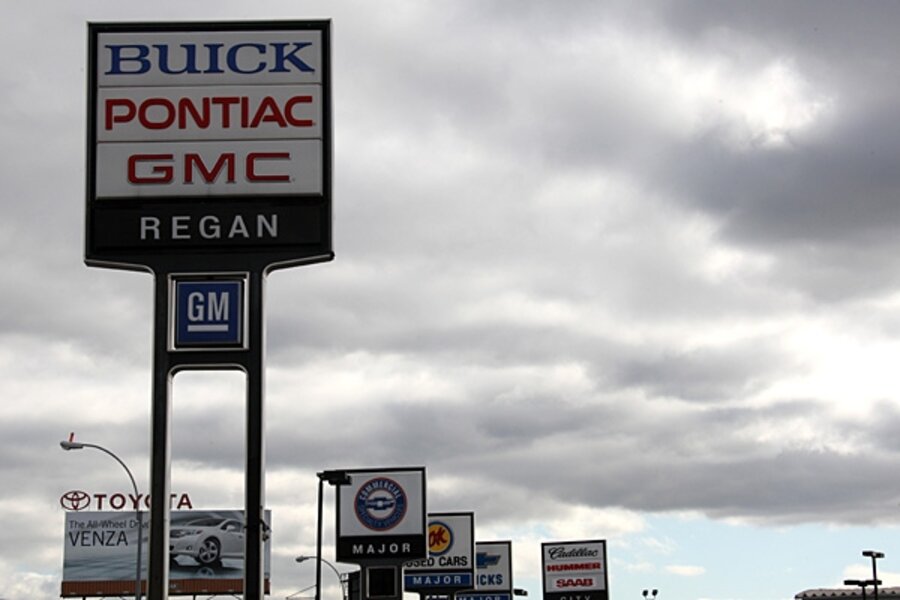Why bankruptcy might not be so bad for GM
Loading...
A bankruptcy filing by General Motors appears to be just days away, but the road through court could end up being smoother and faster than the company initially feared.
This brighter view of bankruptcy is emerging even as GM has made last-ditch efforts to avoid filing to restructure under court protection.
On Wednesday, America’s largest automaker announced that its efforts to reach a deal with creditors had failed, meaning the next stop is likely to be federal bankruptcy court, as soon as Monday.
For months, GM executives have warned that a bankruptcy could mean plunging vehicle sales and lengthy litigation that does long-run damage. One of the firm’s big suppliers of parts, Delphi, has been mired in bankruptcy proceedings for several years now.
But now, the experience of another Detroit carmaker suggests that a giant industrial firm can have an expedited ride through the Chapter 11 process, especially if the government has agreed to chip in billions of dollars in aid.
Chrysler filed for bankruptcy at the end of April. Rather than bogging down with petitions from various creditors, the case may end with a restructured company emerging soon. Meanwhile, the court process hasn’t proved ruinous for Chrysler’s sales.
“The thing is moving along much more quickly than many people would have assumed,” says Jeremy Anwyl, CEO of Edmunds.com, a provider of automotive information. “The government is playing a unique role. They are the only entity offering to put up additional financing [for carmakers] right now.”
Whether it’s the government or a private lender, any entity providing vital cash to help a company restructure often has lots of clout with the judge overseeing the case.
In the Chrysler case, US Judge Arthur Gonzalez quickly approved the government’s debtor-in-possession role.
Chrysler plans to use more than $4 billion in government funds to survive as it downsizes and enters an alliance with Fiat. One major creditor, a healthcare trust for Chrysler’s union retirees, would end up being paid by obtaining a majority stake in the new Chrysler. Other creditors, owed about $7 billion, would get $2 billion in payouts. Fiat’s stake could rise as high as 35 percent.
The parties agreed to this plan in April. But not all creditors approved, pushing the matter into court.
The legal wrangling continued on Wednesday, as multiple parties contested the plan. But Chrysler says that this deal involving government money and partnership with Fiat is the only viable one.
An Obama administration task force, in brokering the plan, thought carefully about where to file the case.
“Our goal is to have this bankruptcy be short and completed quickly,” a senior administration official said in a press briefing on April 30. “The court in New York has a vast amount of experience in this area, and we felt that that would be the most effective.”
How have Chrysler’s car sales been affected by the legal proceedings?
The company took a hit earlier this year, as the prospect of bankruptcy became public, Mr. Anwyl says. But if anything, sales appear to have gone up since the Chapter 11 filing, he says.
Consumers, in part, are heading to dealerships hoping for a bankruptcy-related bargain. They can find fire-sale prices at the many Chrysler dealerships that are slated for rapid shutdown, since those dealers are scrambling to unload inventory within the next few weeks. This includes the Dodge and Jeep brands that are owned by Chrysler.
Car shoppers may also be aware that the Obama administration has pledged to backstop the warranty on a new car from Chrysler or GM.
So far, the Chrysler bankruptcy is going very well, compared with the dire warnings that some analysts had a month ago. But GM won’t necessarily follow the same path as Chrysler.
“GM is a much larger company,” with more diverse stakeholders, Anwyl says. “You could have a lot more in the way of legal challenges.”
Still, GM can take some comfort from the Chrysler experience.
GM had warned of the dangers of bankruptcy in a February report to the Obama administration. The company cited research suggesting that car sales would take a dive during bankruptcy. And, it said, the court process is unpredictable.
“Given the complexity and scope of General Motors’ global business operations, there is a substantial risk that emergence from bankruptcy will prove impossible,” the company said. In that case, the report said, “liquidation pursuant to Chapter 7 of the Bankruptcy Code will result.”
GM now has more reason to be hopeful that won’t happen, with the White House at its side. The government financing for GM will be much larger than for Chrysler, and the result is likely to be that the government owns most of a newly remade General Motors.





